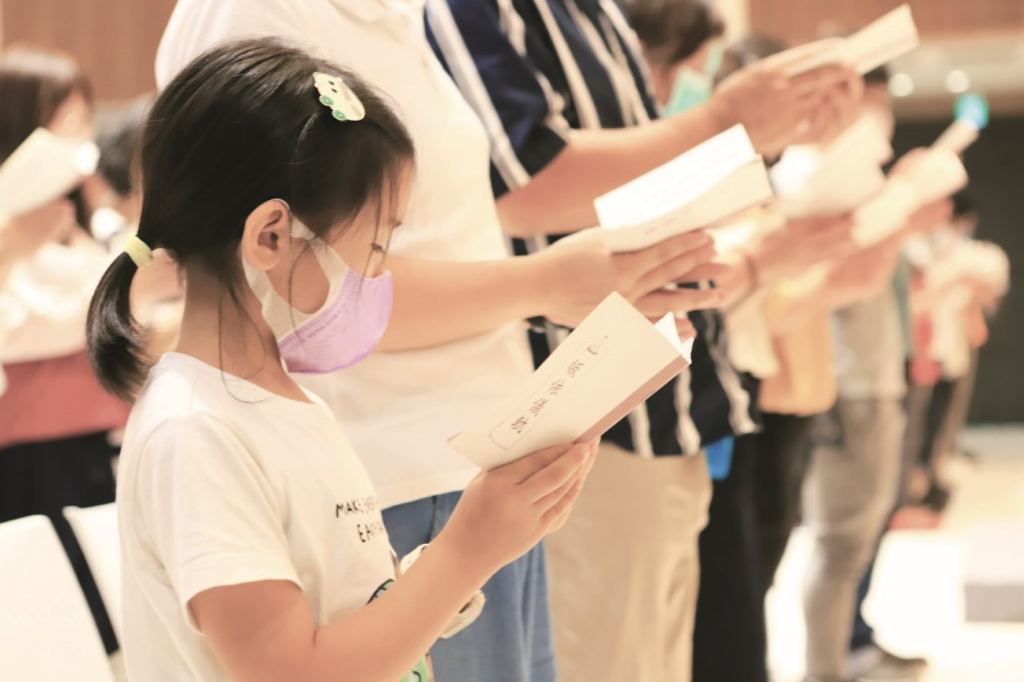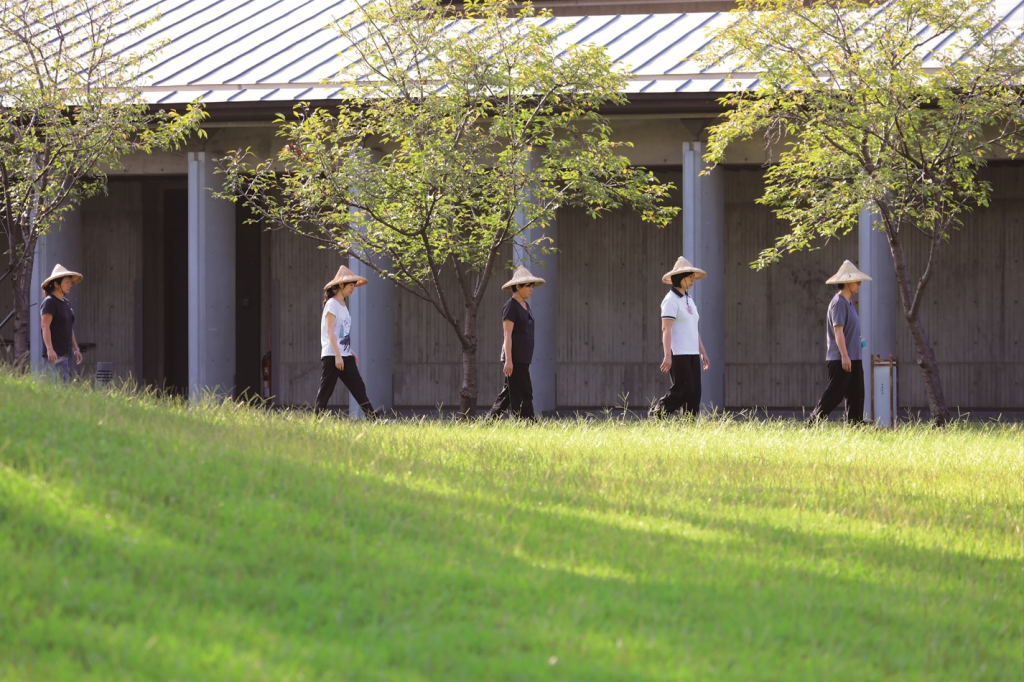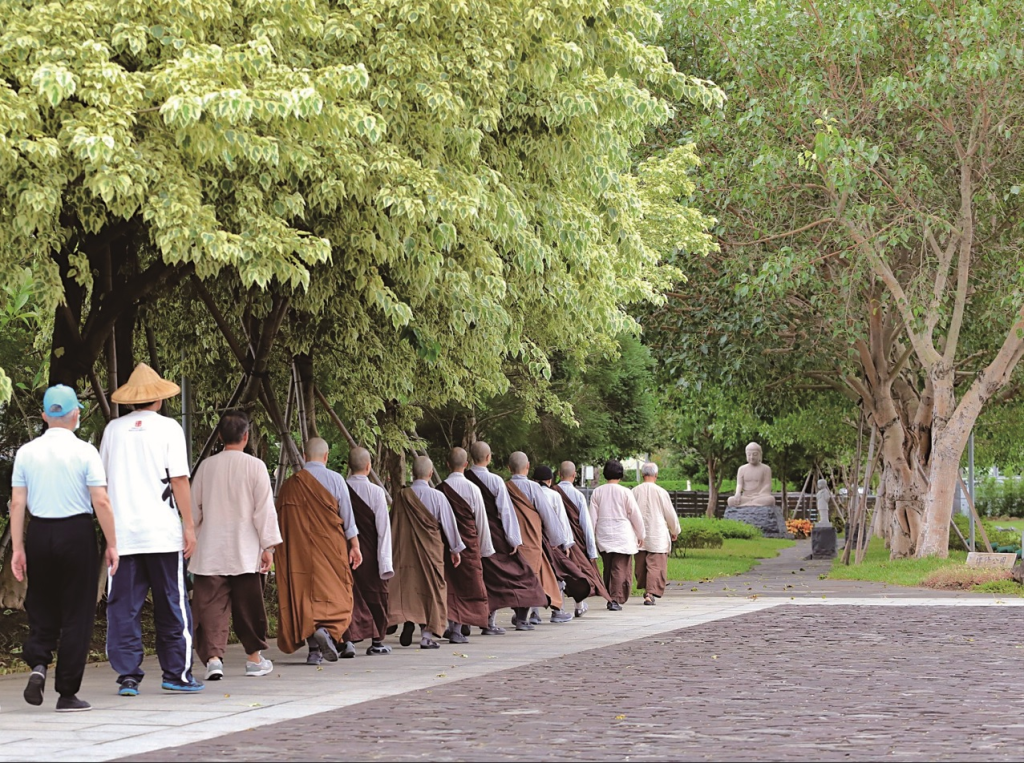During the Buddha’s time, there was no distinction between the Hīnayāna and Mahāyāna. The Dharma is of one flavor; it’s just that different listeners understand it differently and attain different levels of realization. To listeners with shallow karmic capacity, the Buddha taught basic human ethics such as keeping the five precepts and practicing the ten good deeds, the so-called human and heavenly vehicles. To listeners who felt great repugnance for life, the Buddha taught the lesser vehicle of the śrāvaka, the means to liberate beings from cyclical existence. And to those with deep karmic capacity and the compassionate wish to transform the world, he taught the greater vehicle of the bodhisattva. In fact, there are a total of five vehicles in Buddhist practice: the human, heavenly, śrāvaka, pratyekabuddha, and bodhisattva vehicles. Those who practice the five precepts and ten good deeds in a superior manner ascend to the heavens, while those who practice them in an average manner are reborn as humans.
Together, these two vehicles are called the human and heavenly path. Śrāvakas are practitioners who have transcended life and death after hearing the Dharma and practicing it. Pratyekabuddhas are practitioners who have transcended life and death after practicing themselves, without having heard the Dharma from a teacher. The practices of these two, śrāvakas and pratyekabuddhas, are collectively called the path of liberation. The bodhisattva path is a practice that seeks liberation without renouncing human and heavenly activities. Thus, the Mahāyāna bodhisattva path integrates both the liberation path and the human and heavenly path. Those who only practice the five precepts and the ten good deeds of the human and heavenly path are still ordinary people. In contrast, individuals who have attained liberation and are hence no longer subject to birth and death are called noble ones. Noble ones who are only interested in practicing the Dharma for liberation, with no intention to come back to liberate other sentient beings, are referred to as followers of the Hīnayāna, meaning “small or lesser vehicle.” Bodhisattvas aim to attain supreme Buddhahood and liberation on one hand, and to save numberless sentient beings from suffering on the other. Therefore, they are called followers of the Mahāyāna, or the “great vehicle.”
Buddhism can also be divided into the Northern and Southern traditions according to its geographic distribution. According to one system of classification, the Northern tradition is based on Sanskrit scriptures and is Mahāyāna Buddhism; China is central to this tradition, which also spread to Japan, Korea, Mongolia, and Tibet. The Southern tradition is based on Pali scriptures and is Hīnayāna Buddhism; Sri Lanka is central to the tradition, which also spread to Thailand and Burma.
Actually though, this is just the Northern tradition’s classification system, and the Southern tradition completely rejects it: as we can see in scroll 45 of the Monastic Code of the Mūlasarvāstivāda and in sūtra 769 in scroll 28 of the Za ahan sūtras, the term dasheng [meaning “great vehicle,” which could translate back into the Sanskrit word mahāyāna] is used to label the practice of the Eightfold Noble Path. Also, in sūtra 669 in scroll 26 of the Za ahan sūtras, the term dashi [meaning “great person,” which could translate back into the Sanskrit word mahāsattva] is used to describe practitioners who practice the four methods of inducement. Finally, in scrol9 of the Zengyi ahan sūtras, the six perfections (liudu) of the Mahāyāna are clearly mentioned.
In terms of theoretical development the Northern tradition is superior to the Southern tradition. But in terms of actual practice, people in the Northern tradition do not necessarily follow the Mahāyāna path, nor do those in the Southern tradition necessarily follow the Hīnayāna path. And except for vegetarianism, the Northern tradition in China has no practices superior to those of the Southern tradition. During the Wei-Jin period (220–420), the practice of pure talk, which was centered on the abstruse philosophy called dark learning or “studies of the abstruse” that developed from the Daoist thought of Laozi and Zhuangzi, was prevalent. Mahāyāna Buddhism was received in a similar vein: elite scholar-gentry during that period discussed Buddhist ideas as an idle pastime, as a part of their “pure talk.”
In fact, the theoretical underpinnings of the Chinese Tiantai and Huayan schools somewhat reflect this trend. Therefore, the modern Japanese scholar Kimura Taiken (1881–1930) has criticized Chinese Buddhism as the Buddhism of scholarship, not the Buddhism of practice. His critique is not totally unfounded. In fact, the philosophical structures of the Tiantai and Huayan schools largely emerged from the enlightenment experiences of eminent Chinese monks; these structures lack sufficient basis in Indian Buddhist thought. Therefore the true spirit of Chinese Mahāyāna Buddhism has not yet been disseminated among the people, much less become a refuge for the common Chinese people. Consequently, some have said that Chinese Buddhism is Mahāyāna Buddhism in philosophy, but Hīnayāna Buddhism in practice.
Resources
Orthodox Chinese Buddhism, What Do Mahāyāna and Hīnayāna Refer To? , p.96-98










